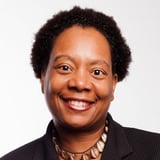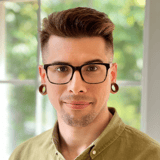Summary
In this insightful fireside chat, Mike, a seasoned design lead with over 15 years of experience, discusses his evolving relationship with user research and design leadership. Although he humbly admits to not being a researcher himself, Mike highlights the critical role that research played at Twitter and now at Kraken, one of the world's largest digital asset exchanges. He emphasizes that research should be seen as a time-saving and impact-enhancing discipline rather than a bottleneck, particularly when advocating for research teams to be compensated equally to engineers, reflecting their technical expertise and influence. Mike also shares strategies for building and scaling research departments, including hiring, delegation, and organizational alignment, stressing the importance of securing high-level champions such as a CEO or CTO. He explains the unique challenges of conducting sensitive remote research in the crypto space, where privacy and geopolitical issues matter deeply. When addressing common resistance by engineering teams to research, Mike identifies hubris, lack of exposure to strong research, and directive leadership as key factors. He advocates for a culture where team members proactively improve processes beyond their defined roles, supported by behavioral evaluation frameworks rather than outcome-based ones, fostering equity and collective growth. Mike concludes with practical advice to mirror engineering career ladders for researchers to simplify compensation and promotion discussions and reinforce research's equal footing within tech organizations. The conversation is rich with reflections on equity, efficiency, and culture-building in research and design.
Key Insights
-
•
Research, when done well, saves time and prevents costly misdirection, making it an investment rather than a delay.
-
•
Researchers should be paid equally to engineers because their technical skills are equally essential to product success.
-
•
Aligning research teams under influential company leaders, like the CEO or CTO, is key to gaining organizational support.
-
•
Building research teams involves thoughtful hiring pacing to balance individual contributors and managers.
-
•
Remote research in sensitive areas like crypto requires special attention to privacy and geopolitical concerns rarely seen in consumer products.
-
•
Many engineering teams resist research due to hubris, lack of exposure to quality research, or top-down mandates ignoring user evidence.
-
•
Encouraging team members to contribute beyond their explicit roles improves processes and strengthens the team culture.
-
•
Evaluating researchers and designers on behaviors rather than outcomes ensures fairness and accounts for project context variability.
-
•
The research function should report to the part of the organization that can best leverage it, which may vary by company and context.
-
•
Mirroring engineering career frameworks for researchers simplifies compensation and promotion conversations, providing clarity and equity.
Notable Quotes
"I know less about research than anybody at this entire conference, I guarantee."
"At Twitter, I learned how much we were failing users globally despite thinking we were doing excellent work."
"Designers and researchers should get paid like engineers—it's time to value them the same."
"Research is there to save you time, not to take up time."
"If you go a day without making a single decision, that means all decisions in your team have been made correctly."
"I want people on my team to get outside their lane to help improve the team beyond their direct responsibilities."
"Many engineering teams think they know best and would rather take a road to nowhere than wait for research."
"Remote research in crypto is about much more than flipping through a feed; it involves sensitive financial data and privacy concerns."
"You have to find your champion as high up in the company as possible to push for research and equitable pay."
"Mirroring engineering’s career ladder for researchers stops weird conversations about titles and pay differences."
Or choose a question:
















More Videos

"We made this move in January 2020 — our research and insights team moved out of UX but stayed within product organizations."
Nalini KotamrajuResearch After UX
March 25, 2024

"Availability bias means hiring managers often pick fruit from a tree they haven't planted."
Dean BroadleyNot Black Enough to be White
January 8, 2024

"We’re not going for perfection. We’re going for excellence and change."
Denise Jacobs Nancy Douyon Renee Reid Lisa WelchmanInteractive Keynote: Social Change by Design
January 8, 2024

"Our first problem statement was too big, so we refined it to something more doable and actionable."
Kim Fellman CohenMeasuring the Designer Experience
October 23, 2019

"Saying no shouldn’t be about being difficult but about accountability beyond any one person."
George AyeThat Quiet Little Voice: When Design and Ethics Collide
November 16, 2022

"Getting exact endorsement from the top helps your cause immensely."
Nathan CurtisBeyond the Toolkit: Spreading a System Across People & Products
June 9, 2016

"Platforms need researchers and designers to make them meaningful and intentional for the people they are designed to serve."
Greg PetroffThe Compass Mission
March 10, 2021

"Diverse research teams blend outsider and insider perspectives for authentic cultural translation."
Chloe Amos-EdkinsA Cultural Approach: Research in the Context of Glocalisation
March 27, 2023

"Having the qualitative and quantitative data together lets us tell a comprehensive story to stakeholders."
Mackenzie Cockram Sara Branco Cunha Ian FranklinIntegrating Qualitative and Quantitative Research from Discovery to Live
December 16, 2022
















